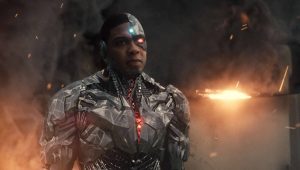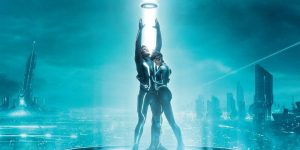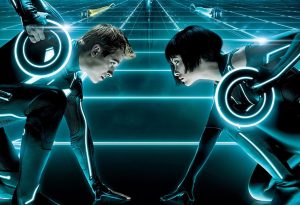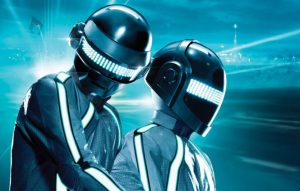The epic saga of Zack Snyder’s original vision for the Justice League movie is arguably more epic than the actual plots of either his film – commonly spoken of as “The Snyder Cut”, with the kind of hushed reverence befitting this semi-mythical Hollywood Holy Grail – or the almost universally-condemned version of his film put together by director Joss Whedon and released in 2017 – and often referred to nowadays as “Josstice League”; a dismissive nickname for a film which dismissed many of Snyder’s boldest ideas out-of-hand in favor of something more generic and “crowd-pleasing”, laced with Whedon’s traditional brand of humor. For years, “The Snyder Cut” of Justice League was the stuff of legend, so mysterious and controversial that many thought it didn’t even exist, and even those who knew about it thought its chances of being recovered, like Snyder’s over-arching vision for the DCEU, had died.

Yet here we are. Following loud and persistent demands from fans, cast, and crew, Warner Brothers finally gave Snyder the go-ahead to complete his already mostly-finished cut of Justice League, touching it up with some additional VFX work and a few minutes of new footage. The Snyder Cut is now available to watch exclusively on HBO Max, making it the ultimate crown jewel in the streaming service’s collection. But after the excessively long waiting-game, the suspenseful build-up, the pageantry and hype surrounding its release…is it, in fact, a better movie than Joss Whedon’s Justice League? Even if it is, is it really good enough to warrant all the attention, all the hashtags and the fan-campaigns, the uproar and the ceaseless arguing?
Fortunately, the answer is a resounding “yes” on both counts. It’s hard to even compare the two when it’s so clear in hindsight that the Snyder Cut is (despite several flaws) a complete, comprehensive work of art; and Whedon’s cut is merely an abridged and simplified version that strips away the artistry, the voice, the heart, and most damningly the soul of Snyder’s film, all while turning up the brightness and saturation to an 11, which I realize now is why some otherwise unchanged elements shared by the two films, such as Ezra Miller’s Flash costume, no longer make me want to rinse my eyes out with bleach. Is the Snyder Cut the greatest superhero film ever made? Not quite (at least to me personally), but the fact that it now ranks anywhere near the top of the list is enough for me to say this whole endeavor was worth it.
Clocking in at four hours (and helpfully divided into chapters of varying length for a more comfortable viewing experience), the Snyder Cut is basically the exact same story as before, but with all the purpose and power layered back in gradually over the course of the film. There’s just enough new (well, old) material to keep the story engaging and fresh, particularly the entire subplot with the villainous tyrant Darkseid (voiced by Ray Porter), but the Snyder Cut’s secret weapon is its ability to take scenes and sequences we’ve already seen – and hated, I might add – and either completely recontextualize them and/or replace the character development and sincere emotion that Whedon removed. And those scenes justify the Snyder Cut’s existence, and make it easy to see why Warner Brothers held out for so long: it’s hard for studio execs to understand that audiences actually want character development and heartfelt stories, rather than nonstop CGI battles and crowd-pleasing jokes every other minute. A superhero movie that’s all about the former, and adds little of the latter? Good luck even getting that movie made.
But superhero movies are evolving well past the limitations imposed on them by studios constantly trying to outdo each other with more and more explosions, snarky one-liners, and third act plot twists. The Snyder Cut is able to be part of that evolution, even as it remains (on its surface) the story of a group of superhumans trying to disconnect sentient alien cubes to stop a cosmic dictator from wiping out all life on Earth. Deeper than that, it’s the story of Victor Stone (Ray Fisher, finally getting the screen-time and justice he deserves), whose every waking moment, trapped in a metal cyborg body designed to keep him alive after a brutal car-crash, is a reminder of pain, guilt, and regret over having been saved from the brink of death in the first place. Victor’s inner struggle is the crux of the film, and out of the large ensemble cast he comes closest to being the singular protagonist. His journey to some level of self-acceptance, piecing together the broken bits of himself to form a whole, mirrors the journey of the disassembled Justice League, which must form to save Earth from Steppenwolf (voiced by Ciaran Hinds).
Other characters have more broadly-sketched emotional arcs, probably as a result of having had origin films or sequels on the way at the time of Justice League’s production. But even so, they’re each benefited by the freedom that four hours allows – Arthur Curry (Jason Momoa), the Aquaman, actually gets to interact with some of his Atlantean brethren beyond just Mera (Amber Heard), planting the seeds for later plot-points like his return to Atlantis and his brother Orm’s betrayal. I generally prefer James Wan’s vision of Atlantis to Snyder’s (which is significantly more bleak, and dark, and did I mention bleak?), but it is nice to see Willem Dafoe again as Aquaman’s mentor Vulko, still pestering him about his destiny and the trident and all that, but sporting a far more magnificent wig than before.

As for the Amazonian warrior Diana Prince (Gal Gadot), it’s glaringly obvious how many of the problems with her character in the theatrical cut of Justice League were wholly the fault of Joss Whedon, as Snyder’s take on the character mostly respects the version of the heroine established by Patty Jenkins in Wonder Woman: never subjecting her to sexist humor or cinematography, giving her a far more prominent role as a leader and strategist as well as a warrior, and removing the awkward, inorganic flirtatious interactions between her and Bruce Wayne (Ben Affleck). Her action scenes are the best in the film, thanks to the thrilling jaggedness of her physical movements, her unique array of weapons, and the eerie wailing female vocals that accompany her into every battle. And there’s one shot of her – too breathtaking to spoil – that perfectly emphasizes how ancient and otherworldly she really is, and how misguided Whedon was to try and sacrifice that aspect of her character.
But the real surprises, at least for me, were Affleck’s Bruce Wayne and Ezra Miller’s Barry Allen. I had so utterly rejected both these actors’ takes on the characters for so long that it was painful to admit that I actually liked them in the Snyder Cut, especially Miller, whose physical acting whenever they get moving is actually mesmerizing to watch, made up of ethereal fluid movements and incredibly gentle gestures. They’re allowed to be serious, and to make their way through scenes without cracking jokes, and their role in the third act is just…intensely cool. As previously mentioned, even their costume looks decent. The same can’t be said of Affleck, whose Batsuit is still atrociously ugly, but in his case the writing is just better overall. Even though he’s the weak link in the League in terms of physical strength and superpowers, the Snyder Cut shows Wayne actually grappling with that fact as well as working past it by utilizing his intellect in fights. He’s never going to be able to hold his own against Steppenwolf for long, and Snyder doesn’t offer him any convenient plot-armor, so he often has to act cautiously and strategically – underscoring his courage in the third-act battle.
Each character’s specific fighting style (besides just their obviously distinct powers) makes for a series of diverse action scenes, ranging from a surprisingly ferocious battle between Wonder Woman and a group of European terrorists, to the third-act battle in which she, Aquaman, and a resurrected Superman (Henry Cavill, no longer obviously suffering from the digitally-removed mustache problem) go toe-to-toe with Steppenwolf, brilliantly bouncing off each other’s strengths and weaknesses. Steppenwolf himself has gone from being one of the worst and most underdeveloped villains in superhero cinema to among the most memorable; a tantalizing, terrifying glimpse of the power of Apokolips. He might look like just a sentient monolith of bone and spine, but he’s almost sympathetic by the time we have to root for the heroes to take him down…and he’s only the weakest of the villains in Darkseid’s inner circle, as the film makes clear. If the Snyderverse is eventually restored, I can’t wait to see characters like Desaad and Granny Goodness join the battle for Earth.
That’s a big “if”, but the mostly self-contained story does include an epilogue with several cliffhangers and teases – all for a sequel we have to hope we’ll someday see, in one form or another. Most of Darkseid’s storyline is left for that hypothetical sequel to deal with, making for a viewing experience that is equal parts electrifying and frustrating, as the four hours start running out and you remember you’re watching merely the first installment in Snyder’s planned trilogy. Then there’s the added wrinkle of Jared Leto’s Joker, a character only recently included in the final minutes of the movie by Snyder, leading to a highly-anticipated encounter between him and his nemesis Batman. No spoilers here, but I was left somewhat underwhelmed by the strange back-and-forth between the characters, which only confirms that Leto’s Joker is not the bold artistic expression he clearly thinks it is.

Rather, Leto’s brief, bizarre, performance is part of a pattern throughout Snyder’s films of small and generally harmless things which, taken out of context and ridiculed online, can easily make the director come across as pretentious and overly-serious. And sure, the Snyder Cut is unintentionally silly at times: an Icelandic villager inhaling Aquaman’s manly scent from his discarded sweater while her fellow townsfolk hail the Atlantean demigod with a hymn is…certainly a choice. Superman posing Jesus-style above the world after his resurrection is some over-the-top religious symbolism. But these are little things, and they don’t accurately represent the entire film.
No matter what you think of Snyder or his past work, it should be obvious that the Snyder Cut is something he loves deeply, and into which he poured a great deal of effort and heart. That doesn’t necessarily always result in a terrific movie, and it could be argued that Snyder loves his work too much, as evidenced by his lack of editing and consequently monumental runtimes – but every moment of the Snyder Cut’s daunting length is worth it for the powerful and quietly respectful scenes each character has gained, for the new perspective on specific arcs and beats we might otherwise have dismissed, and for that love and unique personality which now emanates throughout the story, bringing life back to the Justice League.
First rule of comic-books: no death is irreversible.
Rating: 9/10


